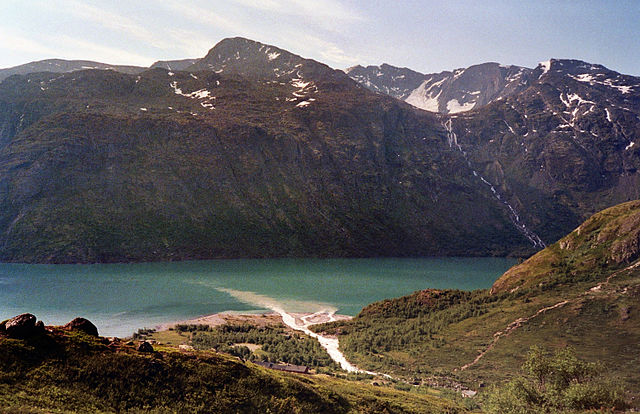Rock flour
fine-grained, silt-sized particles of rock From Wikipedia, the free encyclopedia
Remove ads
Rock flour, or glacial flour, is a kind of flour which consists of clay-sized particles of rock, generated by glacial erosion[broken anchor] or by artificial grinding to a similar size. Because the material is very small, it is suspended in river water making the water appear cloudy. If the river flows into a glacial lake, the lake may appear turquoise in color as a result. Examples of this are Lake Louise, Canada and Gjende lake in Norway.


Remove ads
Agricultural use
Some agronomists believe that rock flour has a powerful effect in restoring trace minerals to soil. An early experimeter was the German miller Julius Hensel, author of Bread from Stones, who reported successful results with steinmehl (stonemeal) in the 1890s. His ideas were not taken up through technical limitations and, according to proponents of his method, opposition from the champions of conventional fertilisers.
Remove ads
Other websites
- On a Fad Diet of Rock Dust, How the Garden Does Grow Archived 2007-12-19 at the Wayback Machine Henry Homeyer, June 24, 2004, New York Times.
- Remineralize the Earth - "non-profit organization incorporated to disseminate ideas and practice about soil remineralization".
- Soil remineralization: a future market for aggregate industry fines Archived 2005-07-15 at the Wayback Machine, Robert J. Able, June 1995, Pit & Quarry.
- Julius Hensel Archived 2005-09-07 at the Wayback Machine
- Downloadable document on co-utilisation of mineral fines and composts Archived 2007-12-03 at the Wayback Machine
Remove ads
Wikiwand - on
Seamless Wikipedia browsing. On steroids.
Remove ads
